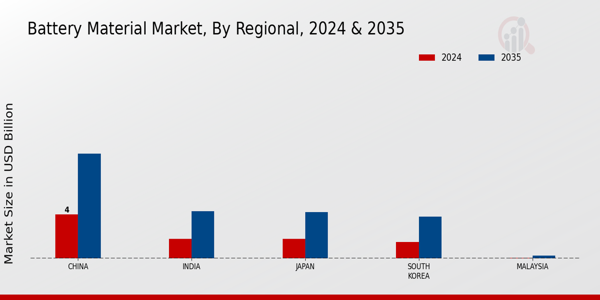The APAC Battery Material Market is characterized by intense competition and rapid growth driven by the increasing demand for energy storage solutions and electric vehicles in the region. With countries like China, Japan, and South Korea at the forefront of battery production and consumption, the market has witnessed significant advancements in manufacturing technologies and raw material sourcing. Key players in this market are continuously innovating to enhance the performance, sustainability, and cost-effectiveness of battery materials. This dynamic landscape is further shaped by government policies promoting green energy, demand for renewable energy storage, and the push for better battery recycling processes.
As a result, companies are forging strategic partnerships, investing in research and development, and adapting to the evolving regulatory environment to maintain a competitive edge. Northvolt has established a notable presence in the APAC Battery Material Market through its commitment to producing high-quality battery materials while ensuring sustainability. The company has positioned itself as a leader in the supply chain for lithium-ion batteries, focusing on eco-friendly production methods and sourcing materials responsibly. Northvolt's strengths in the region stem from its ability to leverage advanced manufacturing processes and its dedication to reducing carbon emissions, which resonate well with regional environmental goals.
The company has succeeded in building strategic relationships with key stakeholders, including suppliers and manufacturers, enhancing its competitiveness. Northvolt's initiatives in battery recycling and sustainable material sourcing further consolidate its position within the APAC market, attracting interest from investors and industry partners keen on fostering a greener future for energy storage. Umicore plays a significant role in the APAC Battery Material Market, offering a wide range of products and services that cater to the needs of battery manufacturers and electric vehicle producers.
The company specializes in materials for lithium-ion batteries, including cathodes and other vital components, which are critical for enhancing battery performance and lifespan. Umicore's strong market presence in the APAC region is underpinned by its extensive research and development capabilities, enabling it to innovate and adapt its offerings to meet the evolving demands of the market. The company's commitment to sustainability is evident through its initiatives in battery recycling and the use of sustainable materials in production processes.
Additionally, Umicore has engaged in strategic mergers and acquisitions that bolster its capabilities and expand its footprint in the APAC market, positioning itself as a key player as the industry shifts toward greener and more efficient battery technologies.






















Leave a Comment